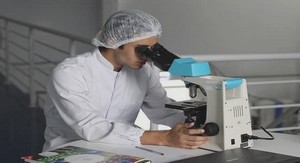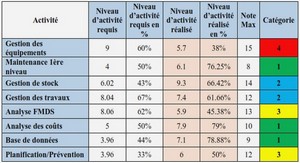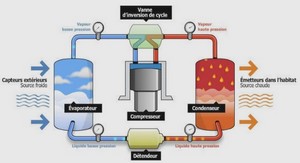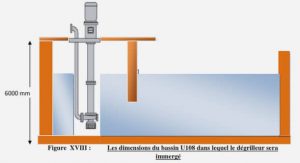Modélisation Mathématique et Simulation Numérique de Systèmes Fluides Quantiques
An asymptotic preserving scheme for the Schrödinger equation in the semiclassical limit
Le but de ce chapitre est d’écrire un schéma numérique asymptotiquement stable pour la limite semi-classique sur la formulation fluide de l’équation de Schrödinger, à savoir le système de Madelung. Ce système consiste en un modèle d’Euler sans pression où un terme quantique additionnel est ajouté: le potentiel de Bohm. Ces équations sont non linéaires contrairement à l’équation de Schrödinger mais leur avantage est que les inconnues macroscopiques ne développent pas d’oscillations d’ordre ε (dans ce chapitre, ε est la constante de Planck adimensionnée), ce qui est le cas de la fonction d’onde dans la formulation de Schrödinger. Ceci est un avantage sérieux dans la limite semi-classique où ε tend vers 0. Différentes stratégies de maillage ont été adoptées dans plusieurs articles sur des schémas pour l’équation de Schrödinger [29, 30, 3] mais même la meilleure méthode nécessite de prendre pour pas d’espace et de temps ∆x = o(ε) et ∆t = O(ε). Plus proche de cette note et en chimie quantique, des méthodes particulaires dans une formulation lagrangienne ont été employées pour résoudre le système de Madelung [6, 43]. Dans ce chapitre, nous proposons d’utiliser un schéma semi-implicite qui a le même coût que le schéma explicite pour résoudre le système de Madelung en formulation eulerienne et lagrangienne. Pour un potentiel extérieur nul, l’analyse du schéma pour le système linéarisé autour d’une densité constante et d’un courant nul montre qu’un critère de stabilité est donné par ∆t < ∆x 2 επ2 . Pour palier l’hypothèse de faible courant et au vu de la même analyse linéaire, le système de Madelung en coordonnées lagrangiennes est discrétisé de manière analogue. Les résultats numériques pour le schéma en formulation eulerienne et lagrangienne avec des potentiels extérieurs constants nous confirment que les schémas sont asymptotiquement stables et que pour un pas d’espace ∆x fixé, on peut augmenter le pas de temps comme 1/ε. L’inconvénient de ces schémas réside dans leur instabilité lorsque la densité est très proche de zéro. Par ailleurs le schéma en formulation eulerienne est instable lorsque le courant est trop fort alors que le schéma en formulation lagrangienne dont les coordonnées bougent avec le fluide reste stable. L’étude de problèmes plus complexes faisant intervenir l’apparition de caustiques et/ou faisant intervenir des potentiels extérieurs non constants est en cours.
Motivations
Physics being not unified yet, there does not exist a universal theory which would allow to describe any particle system. Instead there exists some different theories which apply in certain particular domains. For instance, classical mechanics developed during the 17th century by Newton is applicable only for particles with small velocities v compared to the speed of light c. Moreover, classical mechanics is only useful at relatively large space scales. In order to describe correctly particles with very high velocities, one should use relativistic mechanics developed by Einstein at the beginning of the 20th century, and for very small space scales, one should use quantum mechanics developed by Bohr, Dirac, de Broglie, Heisenberg, Jordan, Pauli, Planck and Schrödinger in the first quarter of the 20th century. Figure 1 is describing some theories and their links according to three constants which appear or not in the theories: the speed of light c, the gravitational constant G and the Planck constant ~. In this thesis, we are interested in the quantum theory and its links with the classical one according to what we call the semiclassical limit. In addition, inside each theory, there exists different description scales. The most precise scale is the microscopic1 (or particle) scale, the intermediate scale is the mesoscopic (or kinetic) scale, and the scale we are interested in in this thesis is the macroscopic (or fluid) scale. Of course, passing from one scale to another leads to a precision loss, but the modeling becomes less expensive from a numerical point of view. Fluid models in classical mechanics have been employed since a long time ago to describe huge particle systems, the most famous being probably the Navier-Stokes model which allows to model air movements in the atmosphere, ocean currents, water flows in a pipe, etc… In the semiconductor industry, the Drift-Diffusion model is widely used to model electron transport. However, the size of the devices being smaller and smaller (it can reach about 100 nanometers), this model is attaining its limits and quantum effects appear. Some devices (such the resonant tunneling diodes) behaviors are even based on effects that only quantum mechanics can explain. In order to model such devices, very few quantum fluid models exist and it is often compulsory to use microscopic models which are very expansive from a numerical point of view, and which do not take into account collisions. The only existing fluid models are often classical fluid models with additional quantum correction terms. Models studied in this thesis have been derived in 2003 [14] by Degond and Ringhofer and in 2005 [11] by Degond, Méhats and Ringhofer and are fully quantum. Table 1 gives different classical and quantum models for particle transport at the three different scales described above. The four models studied in this thesis are quantum and macroscopic: 1. the Quantum Drift-Diffusion (QDD) model, 2. the Isothermal Quantum Euler model, 3. the Quantum Energy Transport(QET) model, 4. the Quantum Hydrodynamic (QHD) model.
Derivation of the quantum fluid models
Method in the classical setting
From Newton’s equations to Boltzmann equation
Let us start by considering a simple system of N particles of mass m evolving without collisions. At the fundamental level, we can describe this system according to Newton’s laws of motion (these laws have been exposed for the first time in 1687 by Isaac Newton in « Philosophiae Naturalis Principia Mathematica »). Each particle denoted with a integer i is described by its position xi ∈ R 3 and its momentum (the product of mass and velocity) pi ∈ R 3 with i = 1, …, N. We obtain the following system: ∂txi = pi m , (2.1) ∂tpi = Fi(x1, …, xN ), (2.2) where Fi ∈ R 3 is the force applied on the particle number i by the other particles and by the external forces. In practice, it is rare to know the exact number of particles contained in a given system, as well as their initial positions and momenta. Even if we knew these pieces of information, solving this system is often too expensive and useless. This is why it is common to use a less precise description level that we call mesoscopic or kinetic. At this scale, the system is described by a distribution function f(x, p, t). This function represents a density in the phase space, meaning that f(x, p, t)dxdp is the number of particles in the elementary volume dxdp with position x and momentum p at time t .
Table des matières (Table of contents) |






